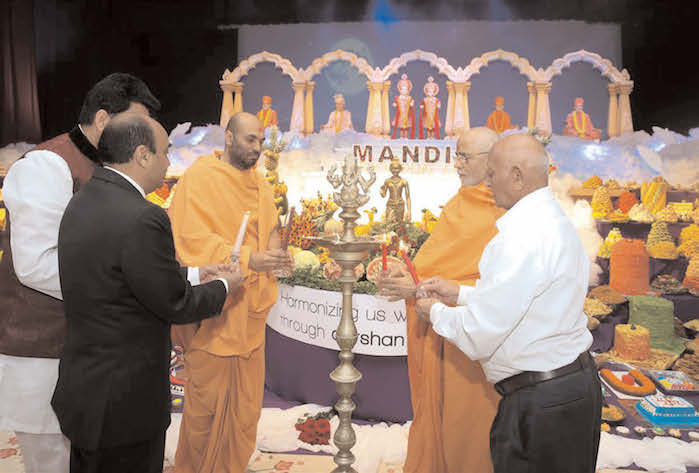
Nirjala Ekadashi falls on the eleventh day (Ekadashi) of the waxing fortnight in Jyestha month. The Ekadashi derives its name from the water-less (Nir-jala) fast observed on this day. It is considered most sacred Ekadashi. It is the most rewarding Ekadashi. Nirjala Ekadashi Vrat is one of the toughest fasts of Ekadashi that is observed by the devotees as the intake of both, food and water is strictly prohibited. Nirjala Ekadashi is dedicated to Lord Vishnu. It is also known as ‘Jyestha Shukla Ekadashi,’ Pandava Nirjala Ekadashi’ or ‘Pandava Bhima Ekadashi.’ Nirjala Ekadashi washes all the sins and connects the devotees to the supreme creator. The fasting is observed without drinking water and eating food. Nirjala Ekadashi is the toughest and significant Ekadashi that is undertaken by staunch Vishnu devotees.
Nirjala Ekadashi will be celebrated on June 18 this year.
Observing fast on this Ekadashi give the results equivalent to observing 24 Ekadashi of an year. After observing this fast, a person should wake up early in the morning on Dwadashi (a day after Ekadasi), take bath, make donation and offer food to Brahmans. The devotee must chant “Om Namo Bhagwate Vasudevay” and donate cow, clothes, fruits etc. on this day.
LEGEND
Nirjala Ekadashi is also known as Pandava Bhima Ekadashi, or Pandava Nirjala Ekadashi. This name is derived from Bhima, the second and strongest of the five Pandava brothers, heroes of the Hindu epic Mahabharata. The Brahma Vaivarta Purana narrates the story behind the Nirjala Ekadashi vrata vow. Bhima, a lover of food, wanted to observe all ekadashi fasts, but could not control his hunger. He approached the sage Vyasa, author of the Mahabharata and grandfather of the Pandavas for a solution. The sage advised him to observe Nirjala Ekadashi, when for one day in the year, he should observe an absolute fast. Bhima attained the virtue of all 24 ekadashis, by observing Nirjala Ekadashi.
PRACTICES
While on other ekadashis abstinence of food is observed,on Nirjala Ekadashi, an absolute fast is observed, without partaking even water. The water-less fast is considered extremely difficult to follow as the day falls in the hot Indian summer and thus, it is deemed as very pious austerity. The fast is observed 24 hours from sunrise on Nirjala Ekadashi to sunrise the next day. Some observe it from sunrise to sunset. On the day before Nirjala Ekadashi, the devotee performs the evening prayer (Sandhyavandanam) and takes only one meal, without rice – as rice eating is prohibited. The devotee is however permitted to have a single tiny drop of water as part of the Achamana purification ritual. Water more than that equals breaking the vow.
Like other ekadashis, puja is offered to the god Vishnu, for whom ekadashis are sacred, to seek his grace. An image of Vishnu or a Saligrama stone (an iconic fossil stone in the form of Vishnu) is bathed (abhisheka) with Panchamrita, a mixture of five foods: milk, curd, ghee (clarified butter), honey and sugar. It is then washed with water and then dressed in royal finery. A hand-fan is also offered. Flowers, incense, water and arati (lamps) are also offered. Devotees meditate on the image of the god. In the evening, they worship Vishnu with durva grass in their hands. Devotees remain awake the whole night and sing praises of Vishnu or meditate on his image. Another characteristic of ekadashis is charity to Brahmins (the priest class). Clothes, food grains, umbrellas, hand-fans, pitchers filled with water, gold etc. are prescribed to be donated on Nirjala Ekadashi.
MERITS
According to the Markandeya Purana and the Vishnu Purana, the day of Ekadashi is itself a form of Vishnu. The vrata observed on this day is said to wash away all sin.[5]One who completes the vrata of Nirjala Ekadashi is mentioned to gain the favour of Vishnu, who grants him happiness, prosperity and forgiveness for sins. The devotee is described to receive the merit gained by the observance of all 24 ekadshis in the year. It is most popular and strictly observed by the Vaishnavas, in particular The observer gains longevity and moksha (salvation). Usually, the messengers of the god of death Yama are described to fetch the person’s soul after death. Yama then judges the person’s deeds and sends him to Svarga (heaven) or Naraka (Hell). However, one who observes the Nirjala Ekadashi rituals is believed to be excused Yama’s judgement and taken by messengers of Vishnu to Vaikuntha, the abode of Vishnu, after death.
HOW TO OBSERVE NIRJALA EKADASHI VRAT
Nirjala means without water. Hence, fast is observed without water and food. It is considered as the most strict and hence, most sacred of all Ekadashis. This fast is extremely difficult to follow as it falls in the hot Indian summer. The 24 hours long fast begins from sunrise on Nirjala Ekadashi to sunrise the next day. People fast and offer puja to Lord Vishnu on this day.
The fast begins with Sandhyavandanam – a prayer. This prayer is performed in the evening before Nirjala Ekadashi, i.e. on 10th lunar day. After prayer devotee takes only one meal, without rice (as rice eating is prohibited). The strict fast continuous throughout Ekadashi. It gets over on next morning. Devotees offer prayer, tulsi, fruits, and sweets to Lord Vishnu and then finish their fast.
RITUALS AND CELEBRATIONS OF NIRJALA EKADASI
– Offer Puja to Lord Vishnu and seek his grace.
– Bath the idol of Lord Vishnu with Panchamrit.
– Wash with clean water and then dressed in new clothes.
– Offer flowers, incense, water, lamps and a hand fan.
– In evening, worship Vishnu with Durva grass.
– Visit nearby Vishnu temple and observe Jagran at night.
– Chant bhajans, Vishnu Sahasranama and other slokas dedicated to Lord Vishnu
– Donate clothes, food grains, umbrellas, hand-fans, pitchers filled with water, gold etc.





Be the first to comment